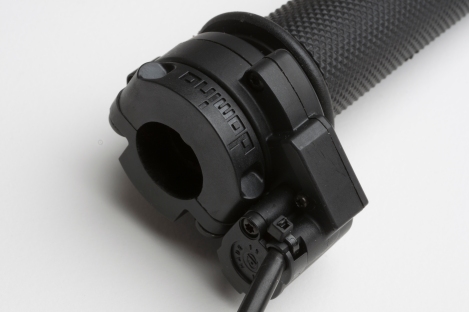Alan B
100 GW
Current Headlight Setup
As the days shorten I will be faced with more riding in the dark. Here I review my current lighting setup.
1) Cycle Lumenator, high voltage, four 250 lumen LEDs with TIR optics, broad pattern doesn't cut off at the horizon, no sharp cutoff anywhere so tipping down doesn't stop glare. This is similar to the ebae lights discussed in other threads. These are wonderful floodlights but they make no attempt to meet the needs of a headlight pattern, and they throw a lot of light into oncoming driver's eyes. I find turning this light off doesn't matter much when the other two are on since the pattern is so spread out. It is a good backup light in case the others separate batteries are too low as it powers from the ebike's main battery with a built in converter.
2) Fenix BT20, 750 lumens, special reflector and has lens features that attempt to make a good light pattern, it helps some. Uses separate 8V battery pack. If you are going to have only ONE headlight, this is perhaps the better unit as they made some attempt to get the pattern right.
3) MagicShine MG-808E 1000 lumens, reflector type with third party fresnel lens added to spread beam into a wide horizontal pattern and reduce glare, aimed slightly right and down, to light side of road where deer and critters dash into your path. Uses separate 8V battery pack. These have a reputation for bad glare since the bare LED is visible forward and makes a very bright small spot. The fresnel lens solves this issue and helps the pattern a lot.
As the days shorten I will be faced with more riding in the dark. Here I review my current lighting setup.
1) Cycle Lumenator, high voltage, four 250 lumen LEDs with TIR optics, broad pattern doesn't cut off at the horizon, no sharp cutoff anywhere so tipping down doesn't stop glare. This is similar to the ebae lights discussed in other threads. These are wonderful floodlights but they make no attempt to meet the needs of a headlight pattern, and they throw a lot of light into oncoming driver's eyes. I find turning this light off doesn't matter much when the other two are on since the pattern is so spread out. It is a good backup light in case the others separate batteries are too low as it powers from the ebike's main battery with a built in converter.
2) Fenix BT20, 750 lumens, special reflector and has lens features that attempt to make a good light pattern, it helps some. Uses separate 8V battery pack. If you are going to have only ONE headlight, this is perhaps the better unit as they made some attempt to get the pattern right.
3) MagicShine MG-808E 1000 lumens, reflector type with third party fresnel lens added to spread beam into a wide horizontal pattern and reduce glare, aimed slightly right and down, to light side of road where deer and critters dash into your path. Uses separate 8V battery pack. These have a reputation for bad glare since the bare LED is visible forward and makes a very bright small spot. The fresnel lens solves this issue and helps the pattern a lot.






